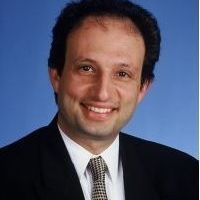Papers by Umberto Mengali
2002 IEEE International Conference on Communications. Conference Proceedings. ICC 2002 (Cat. No.02CH37333)
Proceedings of GLOBECOM'96. 1996 IEEE Global Telecommunications Conference
We propose a novel detection technique for CPM signals transmitted over frequency-flat fading cha... more We propose a novel detection technique for CPM signals transmitted over frequency-flat fading channels. Its most significant feature is that it operates without statistical information on the fading channel and, for this reason, it is nicknamed “blind detector”. Its error rate performance is assessed with CPFSK schemes and is compared with the performance of other decoders
Multi-Carrier Spread-Spectrum, 2006
We consider the downlink of a power-controlled MC-CDMA network in which the base station assigns ... more We consider the downlink of a power-controlled MC-CDMA network in which the base station assigns the power to each user according to its location within the cell. In particular, more power is assigned to the users near the cell boundaries in order to improve the geographical fairness in data reception. This results in a near-far effect for the users located
2003 4th IEEE Workshop on Signal Processing Advances in Wireless Communications - SPAWC 2003 (IEEE Cat. No.03EX689)
We propose two novel non-coherent detection schemes for continuous phase modulated (CPM) signals ... more We propose two novel non-coherent detection schemes for continuous phase modulated (CPM) signals transmitted over frequency-flat Rayleigh fading channels. These detectors are simple to implement and well-suited for the DIIS (Digital Interchange of Information and Signaling) system, an emerging new protocol for narrowband personal mobile radio promoted by the European Telecommunications Standard Institute (ETSI). The first scheme employs a phase
Wiley Encyclopedia of Telecommunications, 2003
... An answer is given by the CramérRao bound (CRB) (3), which represents a lower limit to the M... more ... An answer is given by the CramérRao bound (CRB) (3), which represents a lower limit to the MSE of any ... Two different timing recovery architectures are possible. ... The sampling rate 1/T s is usually higher than the symbol rate by an oversampling factor > 2. Timing correction is ...
IEEE Transactions on Signal Processing, 2001
IEEE Transactions on Information Theory, 1995
IEEE Transactions on Communications, 1996
Symbol timing in continuous phase modulated signals is investigated making use of maximum likelih... more Symbol timing in continuous phase modulated signals is investigated making use of maximum likelihood estimation methods. Nondata-aided algorithms are proposed with a feedforward structure. They are suitable for digital implementation and can be employed with either full or partial response signaling. Multilevel symbol alphabets are allowed and the modulation index may be arbitrary. Performance is assessed by analysis and simulation. It turns out that full response schemes are comparatively easier to synchronize. Difficulties arise with partial response signaling, especially with long frequency pulses.
IEEE Transactions on Communications, 1997
We describe joint carrier phase and timing recovery algorithms for CPM signaling. They may be emp... more We describe joint carrier phase and timing recovery algorithms for CPM signaling. They may be employed with any CPM format, and with either full or reduced state detectors. Their implementation is fully digital, and involves a limited computational complexity. Simulation results show that these algorithms have excellent tracking performance. When operated in their simplest form, however, they may exhibit false
IEEE Transactions on Communications, 1996
IEEE Transactions on Communications, 1999
... Fading Channels Giorgio M. Vitetta, Member, IEEE, Umberto Mengali, Fellow, IEEE, and Michele ... more ... Fading Channels Giorgio M. Vitetta, Member, IEEE, Umberto Mengali, Fellow, IEEE, and Michele Morelli ... 740–745. [8] NAB Svensson and C.-EW Sundberg, “Performance evaluation of differential and discriminator detection of continuous phase mod-ulation,” IEEE Trans. Veh. ...
IEEE Transactions on Communications, 1999
IEEE Transactions on Communications, 1999
This paper is concerned with the estimation of two synchronization parameters that play a key rol... more This paper is concerned with the estimation of two synchronization parameters that play a key role in multi-h continuous-phase modulation receivers-the ordinary symbol timing phase and the so-called superbaud timing phase. The recovery of symbol and superbaud timing is implemented by means of feedforward nondata-aided algorithms. The novelty of the proposed method is that it can be applied to any
IEEE Transactions on Communications, 1999
Linearly time-varying fading models are used to investigate differential detection of PSK signals... more Linearly time-varying fading models are used to investigate differential detection of PSK signals transmitted over frequency-flat fading channels. The structure of the optimal differential PSK detector is derived and an analytical technique is developed to compute its error performance. Results obtained by computer simulation are in excellent agreement with the analytical predictions
IEEE Transactions on Communications, 2005
IEEE Transactions on Communications, 1994
IEEE Transactions on Communications, 1997
We propose a new algorithm for carrier frequency estimation in burst-mode phase shift keying (PSK... more We propose a new algorithm for carrier frequency estimation in burst-mode phase shift keying (PSK) transmissions. The algorithm is data-aided and clock-aided and has a feedforward structure that is easy to implement in digital form. Its estimation range is large, about 620% of the symbol rate and its accuracy is close to the Cramer-Rao bound (CRB) for a signalto-noise ratio (SNR) as low as 0 dB. Comparisons with earlier methods are discussed.
IEEE Communications Letters, 2001
Maximum-likelihood estimation methods are often used to derive carrier frequency recovery schemes... more Maximum-likelihood estimation methods are often used to derive carrier frequency recovery schemes for digital receivers. Unfortunately, their rigorous application is generally hindered by analytical difficulties and, in consequence, some approximations must be made to achieve practical results. In this paper we concentrate on frequency recovery for Orthogonal Frequency Division Multiplexing signals. Following Daffara and Chouly [1], we derive a feedback synchronizer based on maximum-likelihood methods. Making different approximations, however, we come up with a scheme that is superior in terms of estimation accuracy. Comparisons are also made with other feedback schemes based on heuristic reasoning.
IEEE Communications Letters, 2000
In orthogonal frequency division multiplexing systems, the carrier-frequency offset can be divide... more In orthogonal frequency division multiplexing systems, the carrier-frequency offset can be divided into two parts: (1) an integer one-multiple of the subcarrier spacing 1/T and (2) a fractional one-less than 1/2T in amplitude. Some schemes proposed in the literature can only recover the fractional part. We derive two algorithms for estimating the integer part. They are based on the observation
IEEE Communications Letters, 1998









Uploads
Papers by Umberto Mengali